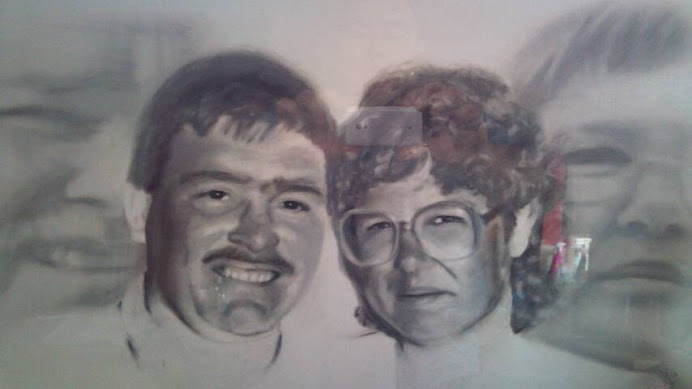This A3 sized piece of
Star Wars themed
art was the marrying of two formats (
graphite pencil and
Inktense pencil) without knowing in advance if such a
mixed media combination would work. Better still (or should I say, foolishly) I went and selected a large A3 sheet of
Hot Pressed watercolour paper to trial the idea. I mean, common sense suggests that I should have tried it out on some scrap paper or at least on something small like A5. Hey ho, it worked and I enjoyed the
artistic progress.
The
graphite pencils were HB, 2B, 4B, 6B, and 8B. Whereas the
Derwent Inktense (
ink)
pencils were a Series 2 twelve piece set with the addition of some extra nine Series 1 and 2 colours. I suspect that there were two Series; because some of the additional pencils are straight edged rather than round along the pencil shaft. Apparently the earlier issue of
Derwent Inktense contained some five (out of seventy two) rogue colours that were not as colour or light-fast as the later Series. But this may of course just be rumour, and the colour range was the same with the first issue, I simply don't know. What I do know is that I love these
pencils.
Inktense colour and shade well onto
watercolour paper, and come alive when you carefully apply water. Although I do recommend using a small rather than a broad brush to tease out the vibrant ink colour saturation.
 |
| Star Wars Scout Sniper Team - Spotter and Rifleman |
The
Star Wars Sniper or
Scout Team figures have been completed previously by other
artists and have appeared online for some time. The figure on the left is usually found facing left (but I have seen it facing in the other direction where someone had mirrored the image). The
Star Wars scenery in which the
Scout is set, is often moody and almost monotone. I also found the right hand
Star Wars Sniper figure online. This cropped figure was presented as a square set up, almost like a sort of cameo. Again, with a moody and limited
colour palette.
My main drawing challenge was to combine the two
Star Wars Sniper figures in a realistic manner. A design that suggested their interaction within the scene was reasonably represented. This took almost a whole day of online research for the appropriate images and then the juggling of the two photographs that I eventually set my mind on. Unlike my father '
Saben'; I am not a portrait artist. So the idea of a figure or figures with masks appeals to me. But even with the face hidden, the detail was too much to draw freehand (if trying to accurately represent the original drawing). So I opted for fixing the
watercolour paper down with masking tape and then marking the tape to provide a 'cm' grid for the two areas where the
Star Wars Snipers would be located. These grid-line
pencil marks had to be very slight, so that they could be erased or overdrawn before completing the final piece.
The next challenge was to change some of the scenery in the background, expand that scenery and then try to suggest that the
Scout Team were on the high ground. I changed the rock in the original broad image hosting the
Sniper with the binoculars; so that the rocks being lent on, became a tree. This leads the eye towards the second
Sniper that is better hidden within the foliage.
All of the
graphite range of
pencils were used, and some
graphite was also laid down on quite a bit of the coloured areas, before applying colour. The camouflage effect was created with a combination of two
Inktense colours; where the colour from both pencils was lifted using a wet brush and then mixed. This
Inktense mixture was then applied to the drawing using a brush. Of (my now) 21
Inktense pencils, the following were mainly used (in no particular order of importance):
Willow
Sun Yellow
Sherbert Lemon
Bark
Apple Green
Baked Earth
Sea Blue
Deep Indigo
and to a lesser extent; Teal green, and Tangerine. When you look at what was a new set of 12
Inktense Pencils now sitting back in their tin, you can see that for this image, both Apple Green and Baked Earth took the greatest hit.
The Star Wars Sniper Team image is called: '
Looking for Targets' and took a total of 16 hours, split into 13 drawing sessions, that were spread over 8 days. I fixed the final image with
Daler Rowney Perfix Colourless Fixative. This is also my now first choice
fixative for
Soft Pastels when sealing between layers.
May the Force Be With You.





















